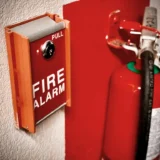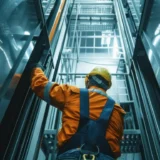Facility management is no longer limited to checklists and reactive maintenance. Technology is now doing a lot of the heavy lifting. AI tracks energy usage in real time. Robots’ clean floors and patrol corridors. Smart systems are predicting breakdowns before they happen.
With this shift, there’s a real question everyone is asking. If machines are doing the work, where does that leave the people?
This isn’t about fearing the future. It’s about understanding how automation fits into the real world of buildings, operations, and human needs. Let’s explore what’s changing, what machines are good at, and where people still matter the most.
The Rise of AI and Robotics in Facility Management
AI has moved beyond tech labs and software demos. It’s now installed in the core systems of many large buildings. Companies are investing in tools that collect building data, analyse patterns, and automate everything from air conditioning schedules to elevator usage.
On the surface, it looks like a smooth transition. You replace a few people with a few sensors. But what’s really happening is more complex.
AI is great at speed, scale, and pattern recognition. Robotics brings consistency to repetitive tasks. Together, they improve performance and reduce cost. But that doesn’t mean you can simply take the human element out.
What this really means is facility management is shifting from being labour-heavy to becoming insight-driven. Managers are now expected to think ahead, interpret data, and respond strategically, not just fix what’s broken.
Tasks AI and Robots Can Handle in Integrated Facilities Management(IFM)
Let’s be honest. Some tasks in facility management are better suited for machines. They’re repetitive, time-consuming, and don’t require human intuition.
Cleaning and sanitisation
Robotic cleaning systems are already active in malls, airports, and office buildings. They cover more ground, follow consistent paths, and reduce manual effort. Machines can also use UV light for disinfection without exposing people to chemicals.
Predictive maintenance
AI doesn’t just wait for things to break. It monitors equipment performance through sensors and alerts teams when wear and tear begin to show. This reduces unexpected failures and extends the lifespan of assets.
Energy and lighting control
Smart meters and AI tools optimise energy use based on occupancy, time of day, and environmental conditions. They automatically dim lights, adjust temperature, and reduce costs without human input.
Security surveillance
AI-enabled cameras analyse movement, detect threats, and send real-time alerts. Some robots even patrol buildings with sensors and voice communication tools built in.
Ticketing and reporting
AI systems can now manage helpdesk operations, assign tasks, and even close tickets after verifying outcomes. They save time and ensure nothing falls through the cracks.
These systems don’t just add speed. They improve accuracy and consistency. But their effectiveness depends on how well they’re integrated and monitored.
Will AI and Robots Replace Facility Managers Completely? Yes, or no?
No. Machines can automate tasks, but they can’t lead teams, resolve conflicts, or make difficult decisions when things go sideways.
Facility management is not just about tools and systems. It’s about navigating unpredictable situations. Fire drills, flooding, client complaints, vendor delays these are not solved by code.
Even the smartest system needs a human to make final calls. A manager is the one who sees the full picture, balances risk, talk to stakeholders, and keeps operations running when the unexpected hits.
So, while the role may evolve, it will not disappear. What’s changing is the kind of value humans are expected to bring. Less manual effort. More thinking, planning, and problem-solving.
What Robots Can’t Replace?
There’s a limit to what machines can do. Some tasks require emotional intelligence, context, and experience.
Understanding people
Managing a team of technicians, dealing with unhappy tenants, or calming down a stressed client these moments require empathy and communication skills. No machine can handle that.
Situational judgment
Not every decision can be made by a rule or algorithm. Sometimes, two maintenance issues need urgent attention, and there’s only one team available. Choosing what to fix first depends on judgment, not code.
On-the-ground response
During emergencies, facility managers need to assess risk, delegate tasks, and reassure staff. A robot might alert you to the issue, but it won’t step in to manage the chaos.
Compliance and accountability
Machines don’t take responsibility. Humans do. Legal compliance, staff safety, and vendor coordination still depend on someone being answerable.
In short, robots are great assistants. But you still need people to run the show.
Pros and Cons of Using AI and Robots in Facility Management
Advantages of automation:
- Faster handling of repetitive tasks
- Fewer human errors in scheduling and reporting
- 24/7 availability and performance monitoring
- Energy savings through smart control systems
- Real-time data that helps make better decisions
Challenges and trade-offs:
- High cost of setup and maintenance
- Dependency on stable networks and software updates
- Limited ability to adapt to unpredictable events
- Lack of emotional intelligence in staff or tenant-facing roles
A fully automated building may sound impressive on paper. But real-world operations still need people who can read the room, adjust on the fly, and lead under pressure.
Conclusion
AI and robotics are here, and they’re not going away. But that doesn’t mean people are being pushed out. Instead, facility managers now have tools that take care of the repetitive, leaving more room to focus on the strategic.
Smart systems don’t replace smart people. They empower them.
At Nanya, we believe technology works best when it supports human judgment, not when it tries to replace it. That’s how we manage buildings by combining data-driven systems with real decision-makers.
If you’re looking to modernise your facility management approach, you don’t have to choose between tech and people. You can have both.
Technology is transforming facility management, but people still make the real difference. We combine intelligent systems with human expertise to create smarter, more responsive spaces. If you’re ready to future-proof your facilities without losing the human touch, let’s start the conversation.
Frequently Asked Questions(FAQs)
1. Will AI eliminate jobs in facility management?
Some routine jobs may reduce, but humans will still be needed for supervision, planning, and coordination. The role of facility managers will evolve, not vanish.
2. Can robots handle all cleaning tasks in buildings?
No. They’re effective for large open spaces but still need humans for detail-oriented work, complex stains, and adjusting to unexpected messes.
3. Is AI affordable for mid-size facility firms?
Yes. Many AI tools are now scalable. Predictive maintenance and automated ticketing systems can save more money in the long term than they cost upfront.
4. What skills will facility managers need to stay relevant?
Understanding how to use tech, reading reports, managing teams, solving problems on-site, and maintaining regulatory compliance will all remain essential.
5. How do you combine human oversight with automation?
Use machines for routine tasks and data gathering. Let humans handle judgment calls, communication, and strategy. It’s not a choice between the two—it’s a partnership.































